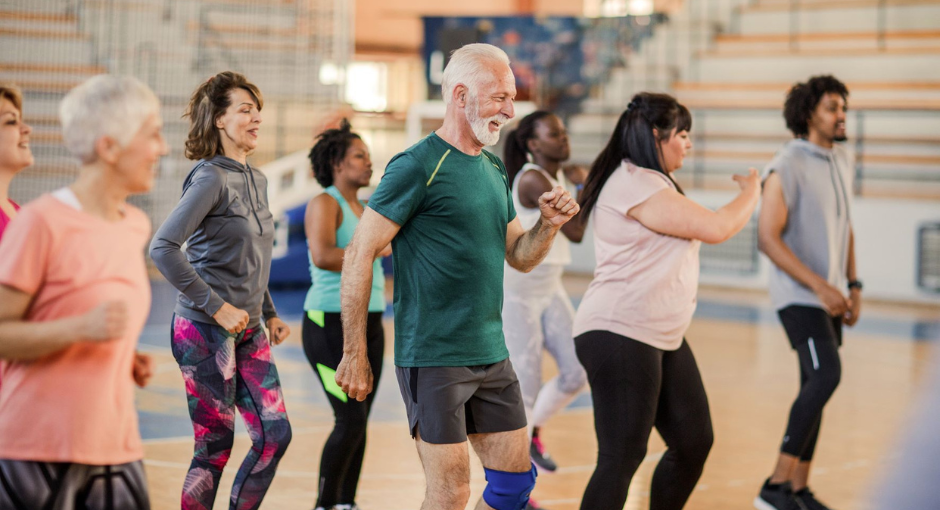Expert Care Experience: Dance/Movement Therapy

This blog is the fifth in a series detailing the roles of each member of a comprehensive care team, covering social work, occupational therapy, speech-language pathology and physical therapy. Learn more about the healthcare professionals that are part of a comprehensive care team and how you can put your care team together today.
What Is Dance/Movement Therapy?
Dance/movement therapy is a form of psychotherapy that uses movement, in all forms, as a means of observation, assessment and intervention in the therapeutic relationship. Unlike dance, dance/movement therapy does not focus on a stylized choreography, specific set of skills or technique. Instead, it allows individuals to move and find comfort in their bodies and to express what words might be too difficult to uncover.
Dance/movement therapy can help support people with Parkinson’s disease (PD) in the moment, even when it is hard to be present to physical sensation and symptoms.
What Do You Do During a Dance/Movement Therapy Session?
There is no one-size-fits-all session, though there are some common basic components. In an individual session, you will likely start with a warm-up where the therapist guides you through movements, from head to toe.
You will be encouraged to move each body part, no matter how small. This allows you to become more aware of your body and experience your capacity for movement. Next, the therapist will coach you to use your body to express behaviors and thoughts or to explore movement patterns and preferences.
Group sessions might incorporate elements from a support group, a social dance or mindful movement class. For example:
When asked how she felt at the beginning of the dance/movement therapy group, Sally reported feeling isolated, standoff-ish and unsure of her ability to participate because of her tremor and poor balance. The therapist invited Sally to show what that looked like using her body. Sally slumped over in her chair, crossed her arms and lowered her gaze. Sally then lifted her chest, looked up to the ceiling and threw her arms up in the air. With a smile on her face, Sally said, “A weight has been lifted. Now, I feel free!”
Who Is a Dance/Movement Therapist?
Dance/movement therapists are registered or board-certified individuals with a master’s degree in dance/movement therapy. Depending on where they practice, dance/movement therapists may be clinical counselors, social workers, creative arts therapists or psychologists. Most have a background in psychology and dance, with a focus on dance as an outlet for mental health and expression. Dance/movement therapists are required to fulfill clinical internships in such settings as hospitals, treatment facilities, day programs, nursing homes, day schools or even private practice.
A dance/movement therapist is an integral part of the care team because he/she can mesh clinical counseling or social work with movement observation and assessment. The therapist’s keen ability to observe the relationship between movement and mental health helps foster a more holistic, mind-body approach to medicine.
Dance/movement therapists receive referrals from other care team members and often co-treat, co-facilitate and collaborate with them. As part of the team, your dance/movement therapist should communicate with other care team members about treatment plans, symptom management and disease progression.
What Symptoms Can Dance/Movement Therapy Help Treat?
Dance/movement therapy addresses motor and non-motor symptoms of Parkinson’s. It focuses on balance, coordination, gait and mobility, but also uses movement to address depression, digestive complications, anxiety and fatigue.
Furthermore, dance/movement therapy encourages individuals to prioritize their mental health. Embracing the arts as a mode of psychotherapeutic intervention and expression seems to help reduce stigma around mental health issues.
Research specifically on dance/movement therapy with PD is taking off. For example, Northwestern University in Illinois recently conducted a study on the effects of dance/movement therapy on fatigue in people with PD. More researchers are becoming interested in this topic, so expect to hear more about the impact of dance/movement therapy in the future. In the meantime, try it for yourself.
How Do I Find a Therapist or Program?
Dance/movement therapists and programs are all over the country. To find one nearest you, go to The American Dance Therapy Association’s website at www.adta.org. You can find a list of resources and a directory of therapists in your area. The toll-free Parkinson’s Foundation Helpline can also help connect you to information and resources: 1-800-4PD-INFO (473-4636).
Dance/movement therapy is often a wonderful complementary or adjunct therapy for individuals affected by movement disorders. Some dance/movement therapy sessions may be covered by private health insurance, which can make it an affordable and accessible option for treatment of symptoms and maintenance of quality of life.
Erica Hornthal, LCPC, BC-DMT, is CEO of Chicago Dance Therapy. She is a clinical counselor and board-certified dance therapist who specializes in working with individuals living with movement and cognitive disorders. Additionally, Erica works with people of all ages and abilities to connect the mind and body to promote self-awareness, self-expression, healthy attachments, compassion and improved quality of life.
For more insights on this topic, listen to our podcast episode “A Western Perspective on PD: Understanding Complementary Medicine”.
Related Blog Posts

Neuro Talk: Newly Diagnosed

Meet a Researcher Working to Make Adaptive DBS More Effective
